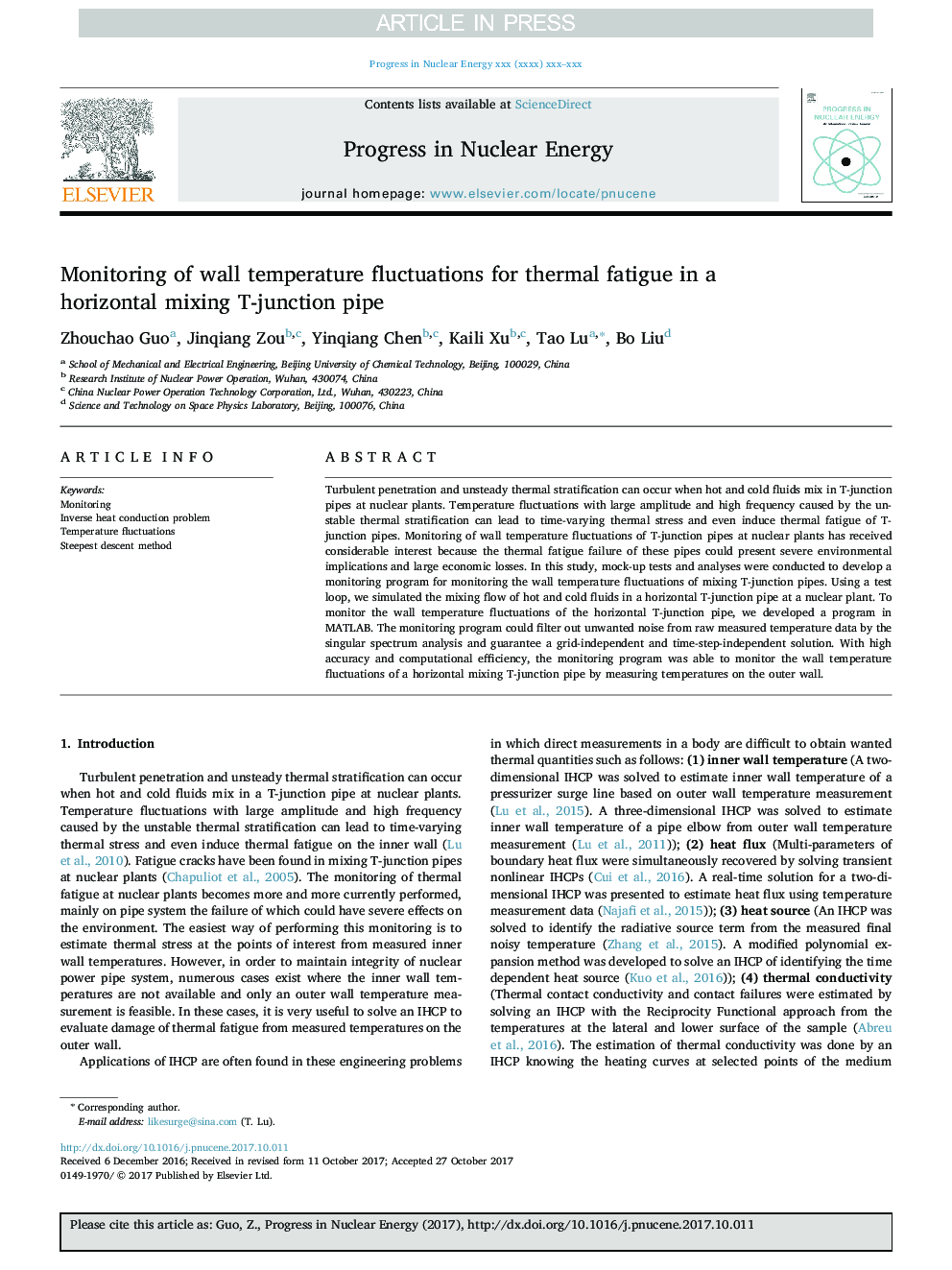| Article ID | Journal | Published Year | Pages | File Type |
|---|---|---|---|---|
| 8084459 | Progress in Nuclear Energy | 2018 | 8 Pages |
Abstract
Turbulent penetration and unsteady thermal stratification can occur when hot and cold fluids mix in T-junction pipes at nuclear plants. Temperature fluctuations with large amplitude and high frequency caused by the unstable thermal stratification can lead to time-varying thermal stress and even induce thermal fatigue of T-junction pipes. Monitoring of wall temperature fluctuations of T-junction pipes at nuclear plants has received considerable interest because the thermal fatigue failure of these pipes could present severe environmental implications and large economic losses. In this study, mock-up tests and analyses were conducted to develop a monitoring program for monitoring the wall temperature fluctuations of mixing T-junction pipes. Using a test loop, we simulated the mixing flow of hot and cold fluids in a horizontal T-junction pipe at a nuclear plant. To monitor the wall temperature fluctuations of the horizontal T-junction pipe, we developed a program in MATLAB. The monitoring program could filter out unwanted noise from raw measured temperature data by the singular spectrum analysis and guarantee a grid-independent and time-step-independent solution. With high accuracy and computational efficiency, the monitoring program was able to monitor the wall temperature fluctuations of a horizontal mixing T-junction pipe by measuring temperatures on the outer wall.
Related Topics
Physical Sciences and Engineering
Energy
Energy Engineering and Power Technology
Authors
Zhouchao Guo, Jinqiang Zou, Yinqiang Chen, Kaili Xu, Tao Lu, Bo Liu,
